The Only 50 Sailing Terms You'll Need To Know (With Pictures)
Ever get confused by all those odd sailing terms? Starboard, tack, jib… Well, no worries. In this article, I'll go over the most important sailing terms for beginners.
This is a great resource for beginning sailors that need an overview of the most important sailing terms without drowning in it. For a comprehensive list, check out this Wikipedia glossary of nautical terms. There are A LOT of nautical terms there. But no one in his or her right mind will read through that entire page (it has 48.434 words!). There are a lot of obscure words listed that no one really uses anyways. So in this article, I've filtered out the most important ones to get you up to speed quickly. I've also added pictures so you'll know what we're talking about.
Let's jump straight in. For the sake of good manners, I have categorized them by topic. If you are looking for a specific term, just ctrl+f your way directly to it.
Here are the only 50 sailing terms you'll need to know:
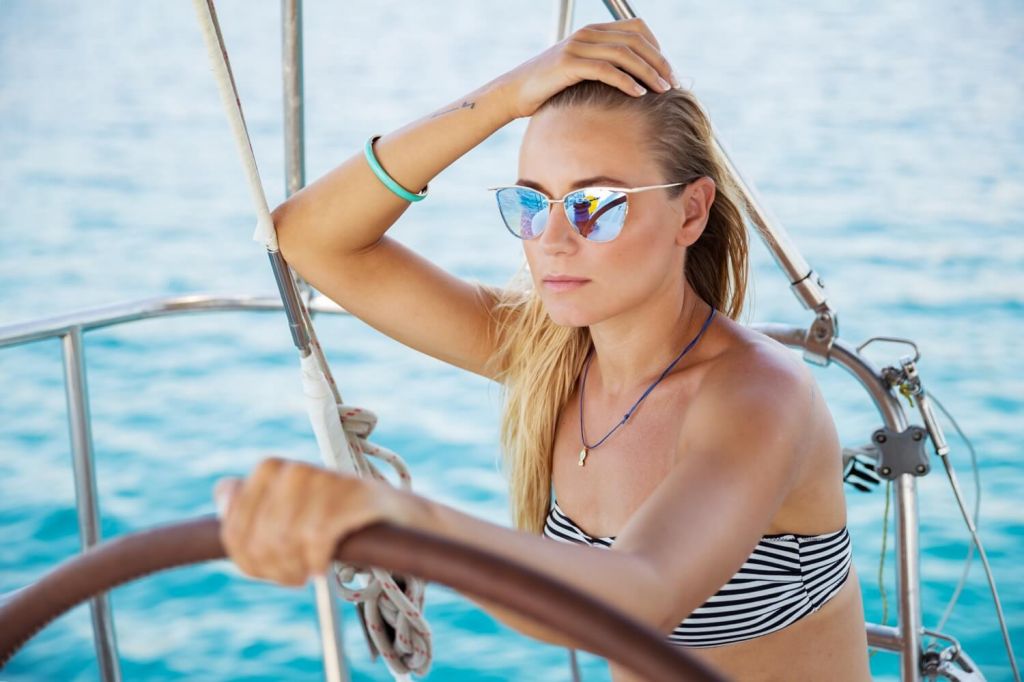
Orientation
...because it isn't as easy as 'left', 'right', 'front' and 'back'. No, no.
Port
Port is the left side of the boat. It's as simple as that. I'm not entirely sure why don't they just call it 'left' these days. The name came to existence because centuries ago, you always docked your big boat with the harbor (port) being on the left side. And the word stuck with us till today.

Starboard
Starboard is the right side of the boat. If in a car, you say 'look to your right', on a boat, you say 'look to the starboard'. Again, you might as well just call it 'right'. Oh, wait… you wouldn't seem as cool if you did. Alright, let's keep calling it starboard.
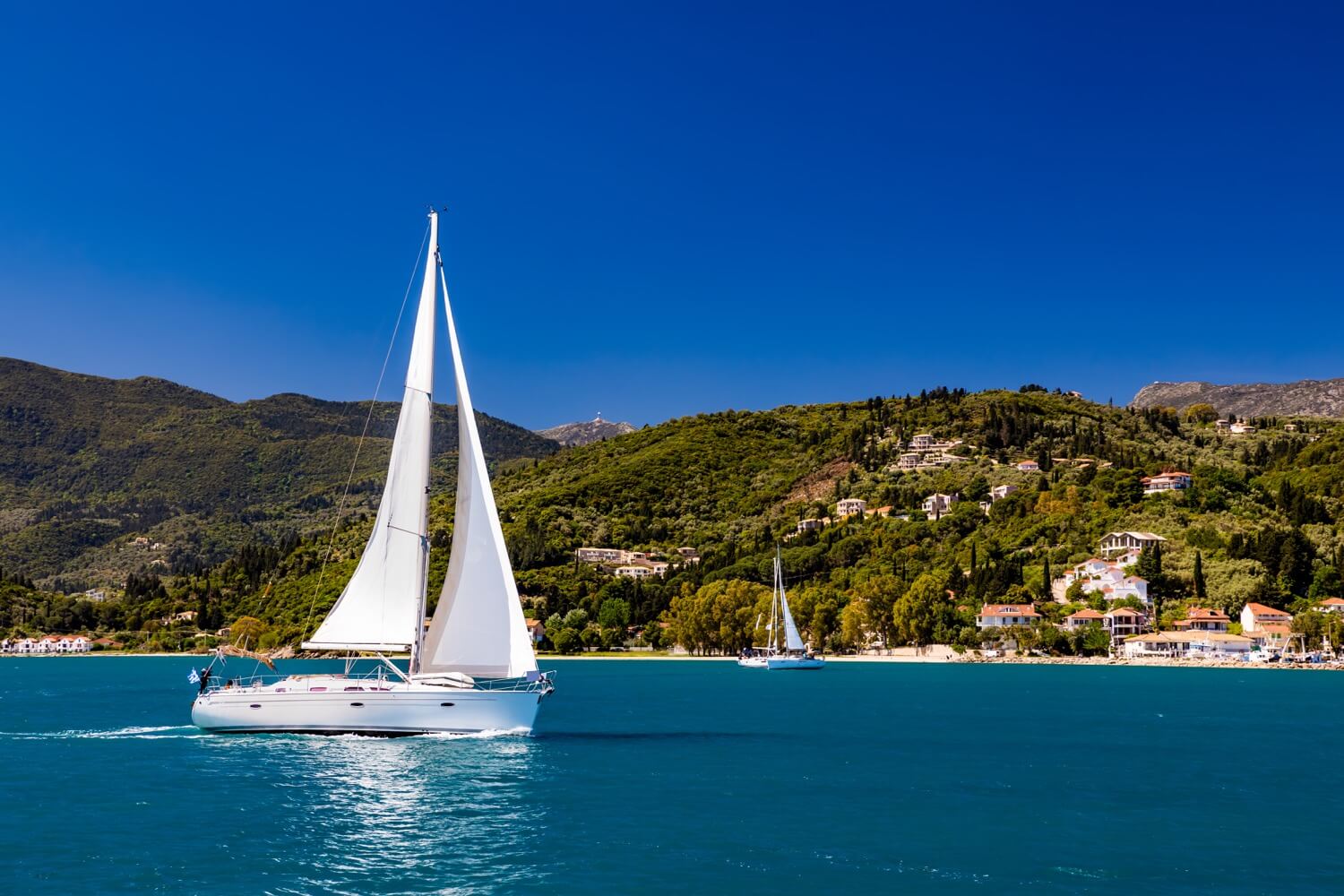
Bow
The bow is the front of the boat. The word likely comes from the Middle Dutch 'boech' (nowadays spelled 'boeg'). If you call it 'front' instead, you will get your message across just as well. But it won't get you the admiring looks from those around you.

Stern
Stern is the back of the boat. That is where you, as a captain, will spend most of your time. Whether you will force your crew to call it 'stern' or let them use the word 'back', like the dry land creatures they are, is up to you. After all, you are the captain.

Windward
The windward side of the boat is the side facing into the wind. So if the wind is coming from the right side, the windward side is on the right. Unlike some of the previous ones, this term actually makes sense - at times you need to talk about a direction not fixed in relation to the boat, but rather relative to the direction of the wind.
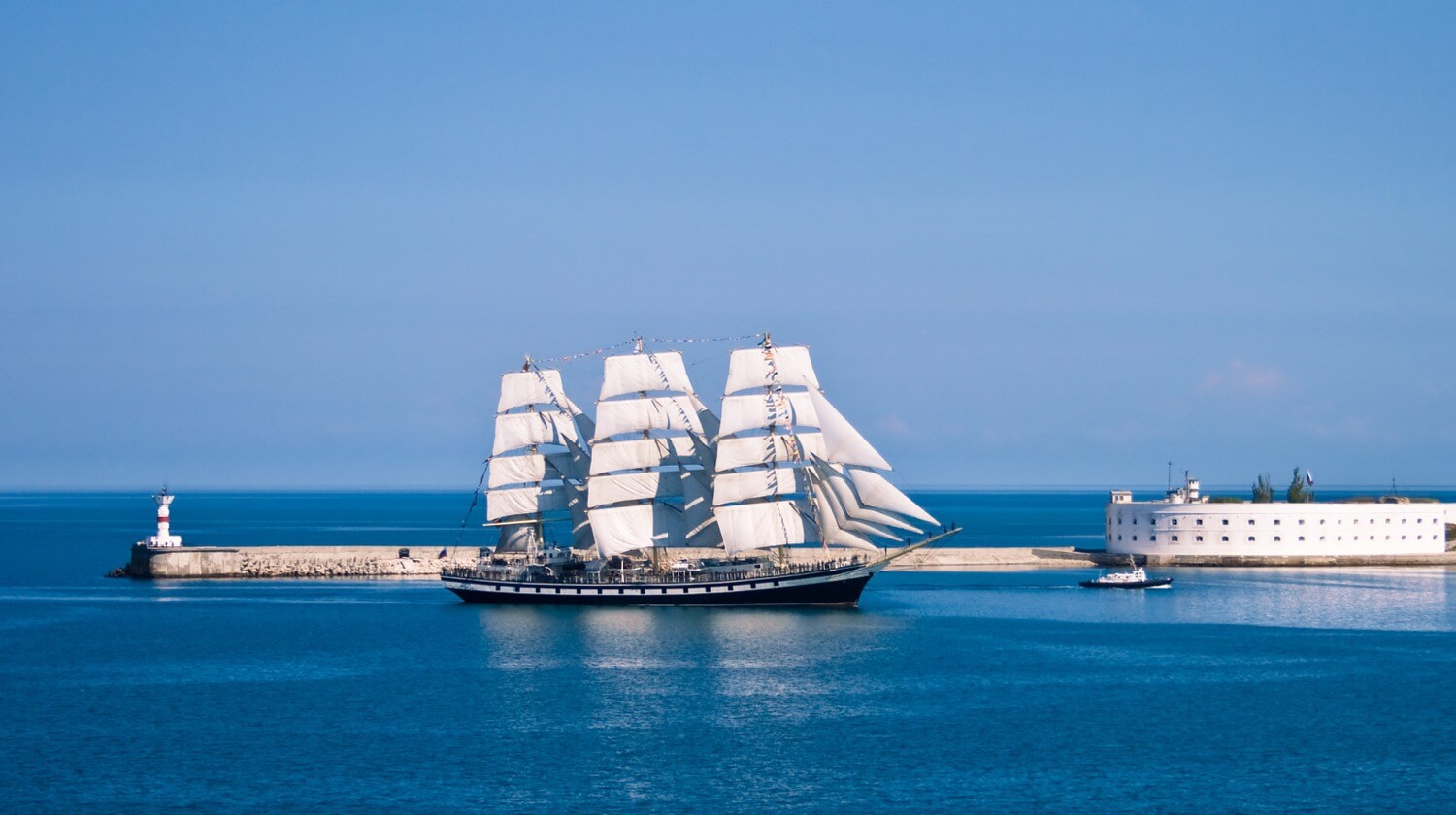
Leeward
Leeward side of the boat is the lee side. If the wind is coming from the right side, the leeward side is on the left. Note that neither windward nor leeward specify the angle of the wind. Thus even if the wind was coming 20 degrees right off of the direction of the boat, so almost from the front, left would still be considered the leeward side.
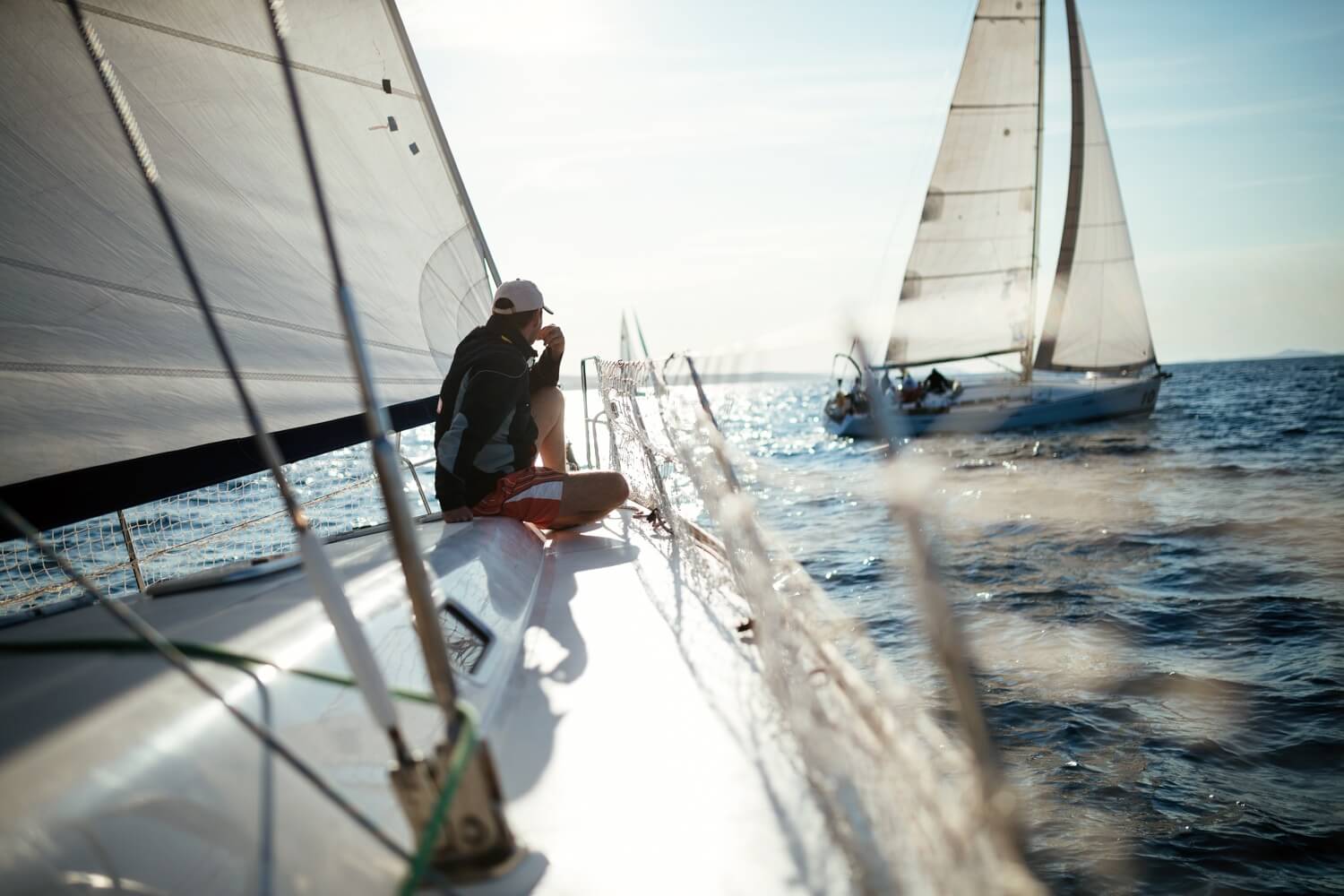
Parts of the boat
Since there are gadgets and parts on the boat that you won't see anywhere else, it only makes sense they all have their own special name. You want to know these because unlike the direction terms where you can do with 'left' and 'right', you don't want to call a tiller 'that stick thing back there'.
Helm
Helm is the boat's steering wheel. In this case, I forgive those who came up with this name, since it is shorter than 'steering wheel' and thus saves valuable time that we can spend on sailing. Though I doubt linguistic economy was the reason.

Tiller
Tiller is the long stick that operates your boat's rudder. A steering stick, if you will. It has the same function as a helm does, but it is usually used on smaller boats, where a helm would take up too much space. Or by people who prefer it to a helm, since a tiller offers a bit more in terms of response.
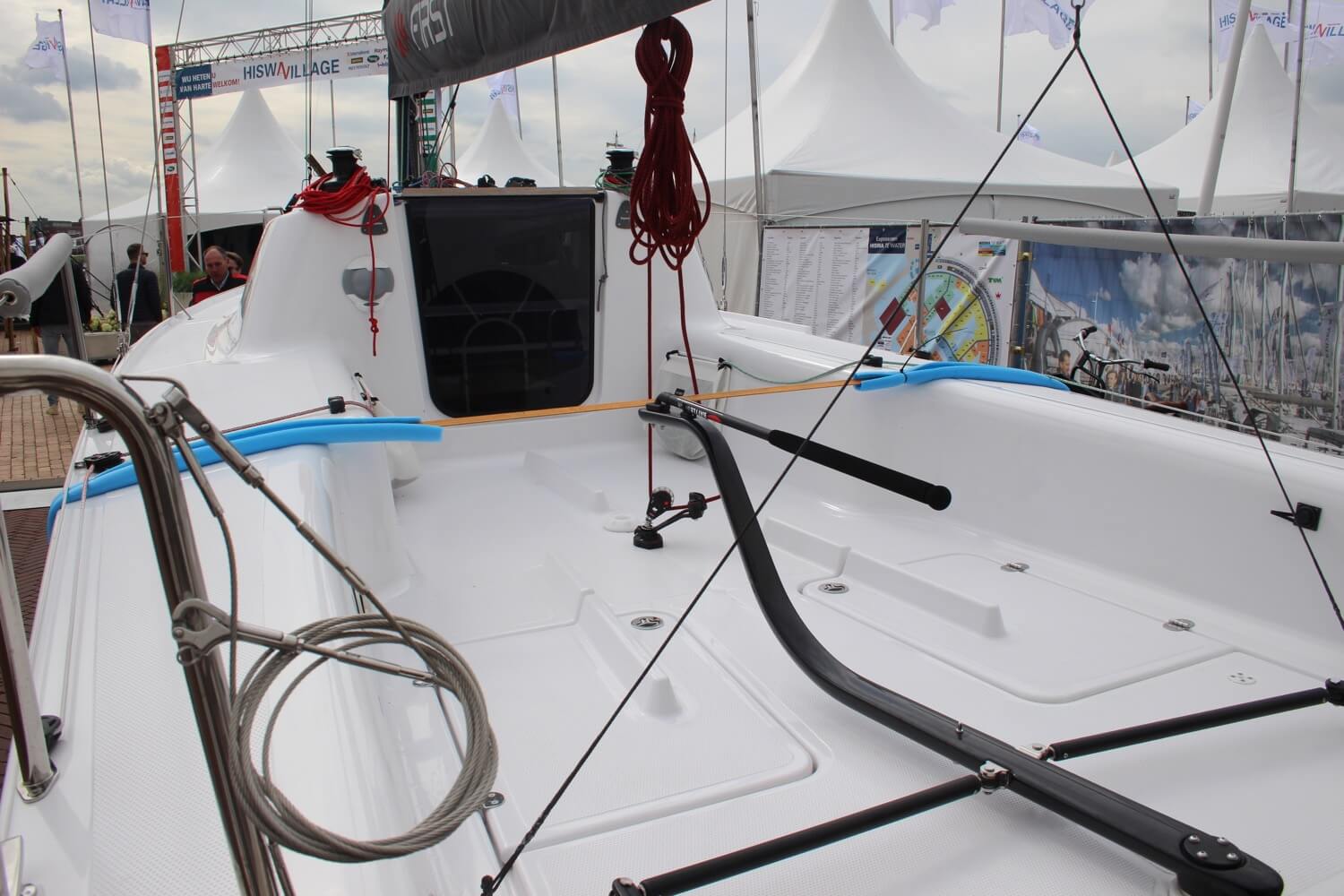
Rudder
The rudder is the long, flat piece of metal or wood that sits underwater below the back of your boat. Connected to a tiller or a helm, it is used to control the direction of your exciting voyage. By the way, since aerodynamics and hydrodynamics work in similar ways, a plane is also operated by a rudder. Though that one isn't underwater. Hopefully.

Hull
Hull is the boat's body. Whatever the shape or size, whether opened on top (like a dinghy) or closed by a deck, (like a traditional sailboat) it's all called a hull. Structures sitting on top of the deck, like a deck salon or cabins, aren't considered a part of the hull anymore.

Keel
The keel is an underwater fin below the boat's belly. The sizes and shapes vary, sometimes it is relatively short and goes deep, (fin keel) sometimes it runs from the front all the way to the back (full keel or ballast keel). It is there mainly for stability and to help maintain forward direction when sailing.
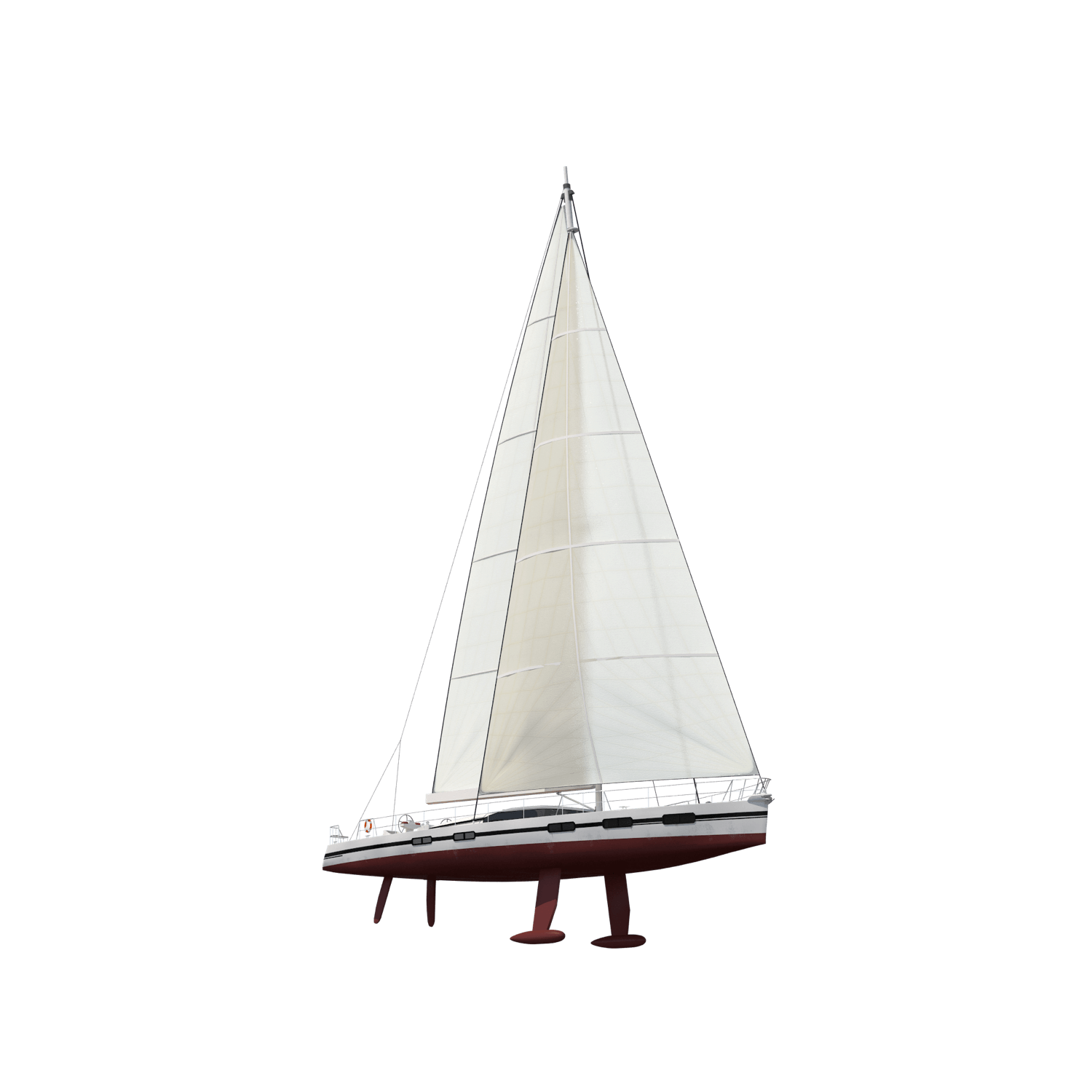
Cockpit
The cockpit is the area where a boat is operated from. On sailboats, it is usually in the back and it is an open area without a roof, though this varies. You will find the rudder control and winches there. In 'smaller' (below 70 ft or so) sailboats this area oftentimes doubles as a deck dining place with a table and seating.

Bimini
The bimini is a sun roof or shade that is covers the cockpit, and is generally attached to a steel frame which runs over the cockpit.
Parts related to sails
This is where things tend to get confusing. There are a whole lot of parts and a whole lot of names for them. It pays off for you and your crew to know them though, as during the stormier moments, you all want to be on the same boat (ha, ha) linguistically, as every second counts.
Lines
Lines are ropes. Not much more to add here. I suppose a 'line' sounds a bit fancier than a 'rope'. One thing this article will teach you is that if there is the slightest crack in the wall of your boat, linguistic elitism will leak its way in.

Mainsail
This one is quite self-explanatory. The mainsail is the main, largest sail of the boat, attached to the mast on the side and the boom at the bottom. It has a triangular shape and serves as the most important sail, the first one you should get acquainted with if you are just starting out.
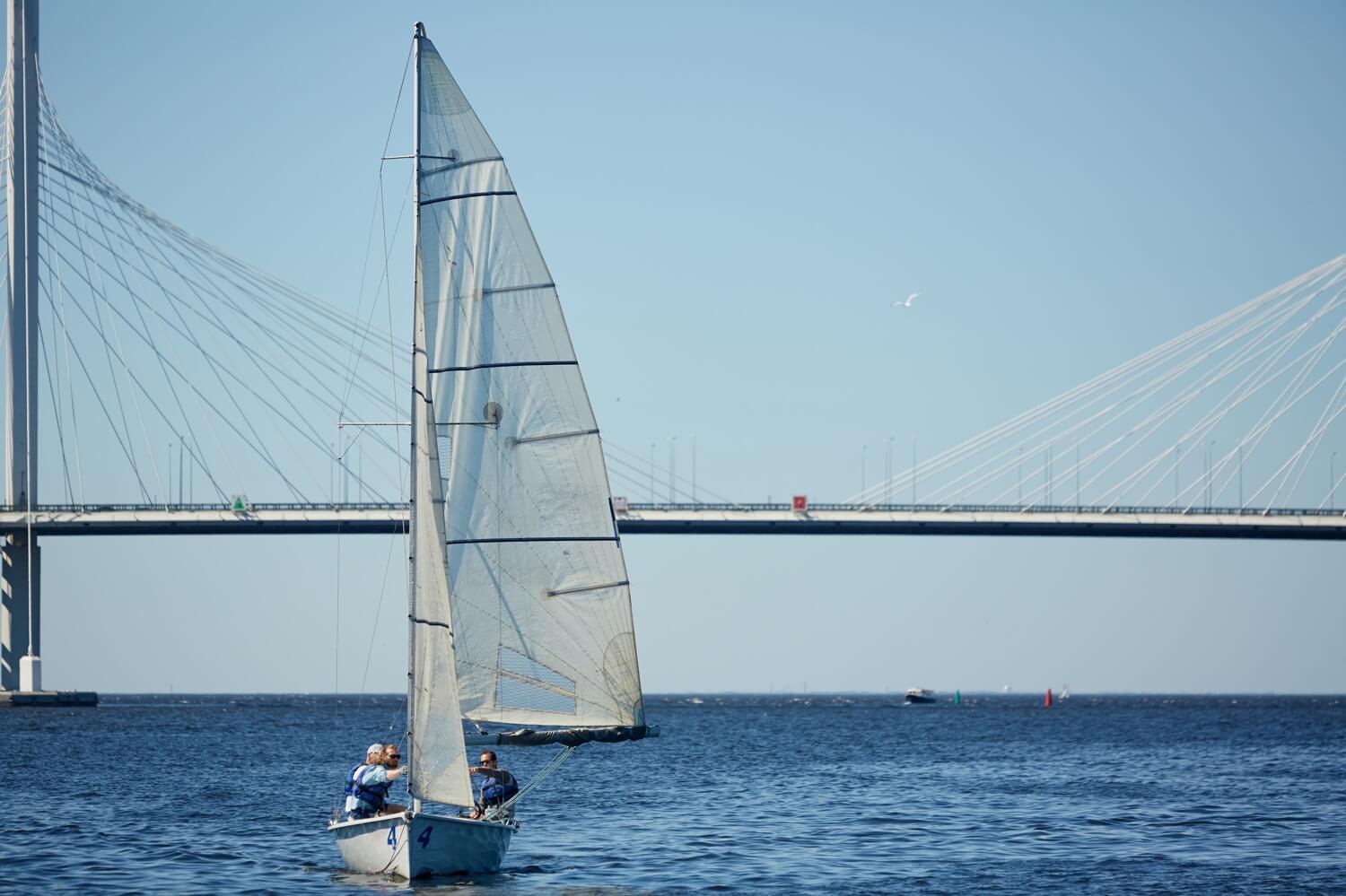
Jib
The jib is the front sail of your boat, sometimes also called the genoa. That is as long as you are sailing on the traditional sloop - the classical two sail setup you see the most often. The jib is wrapped around the line that goes from the top of your mast to the boat's bow.

Spinnaker
Spinnaker is the third type of sail you are the most likely to encounter on your travels. It goes in front of your boat and has a half balloon or kite-like shape. This is because it is constructed specifically for sailing downwind. Its purpose is to grab as much backwind as it can and drag your boat forward. It is not attached to the boat most of the time like the mainsail or the jib, instead, it is stored separately and used only when needed.

Mast
The mast is the tall, vertical pole that goes from the floor of your salon, through the deck, meters above your boat. All the sails are attached to it, also radars and lights, giving sailboats radio and visual visibility far greater than that of equally sized motorboats. Take that, ya noisy stinkies!

Boom
The boom is the horizontal pole right above the deck, attached to the mast at the right angle. The bottom of the mainsail is attached to it, it is used to determine its shape and direction. It is also where the mainsail is often stored, folded and covered with a protective sheet. The boom is also among the top causes of injuries on a sailboat, as in certain winds it tends to swing with force powerful enough to knock a few grown men overboard. Stay away from its reach at all times when under sail.

Forestay
The forestay is the cable going from the top of the mast to the very front of the bow. It is there to hold the mast in place. Sometimes you will find people refer to it as the 'headstay'. It is often made of steel, so it is safe to hold on to it when you are pretending to be Jack on the bow of the Titanic's, the boat hits a wave and you lose your balance.

This diagram is from our guide on sailboat parts, which I really recommend for beginners. It walks you through all the most important sailboat parts in normal words.
Backstay
The backstay is the cable going from the top of the mast to the very back of the boat. In many cases it is doubled at the bottom, each end attached to one corner of the back of the boat so that they don't interfere with space and provide more stability for the mast. Just as with forestay, these are made of steel.
Shrouds
Shrouds are the cables going from the top of the mast to the left and right side of the boat. Sometimes there are four, two on each side. Together with forestay and backstay, they make sure your mast withstands all the forces exerted on it when the wind pushes the sails.
Foot
The foot of a sail is its bottom edge. If you imagine a sail as a triangle, the base is called the foot. You probably won't use this term while sailing, but when researching proper sail trim, it is likely you will stumble upon it.
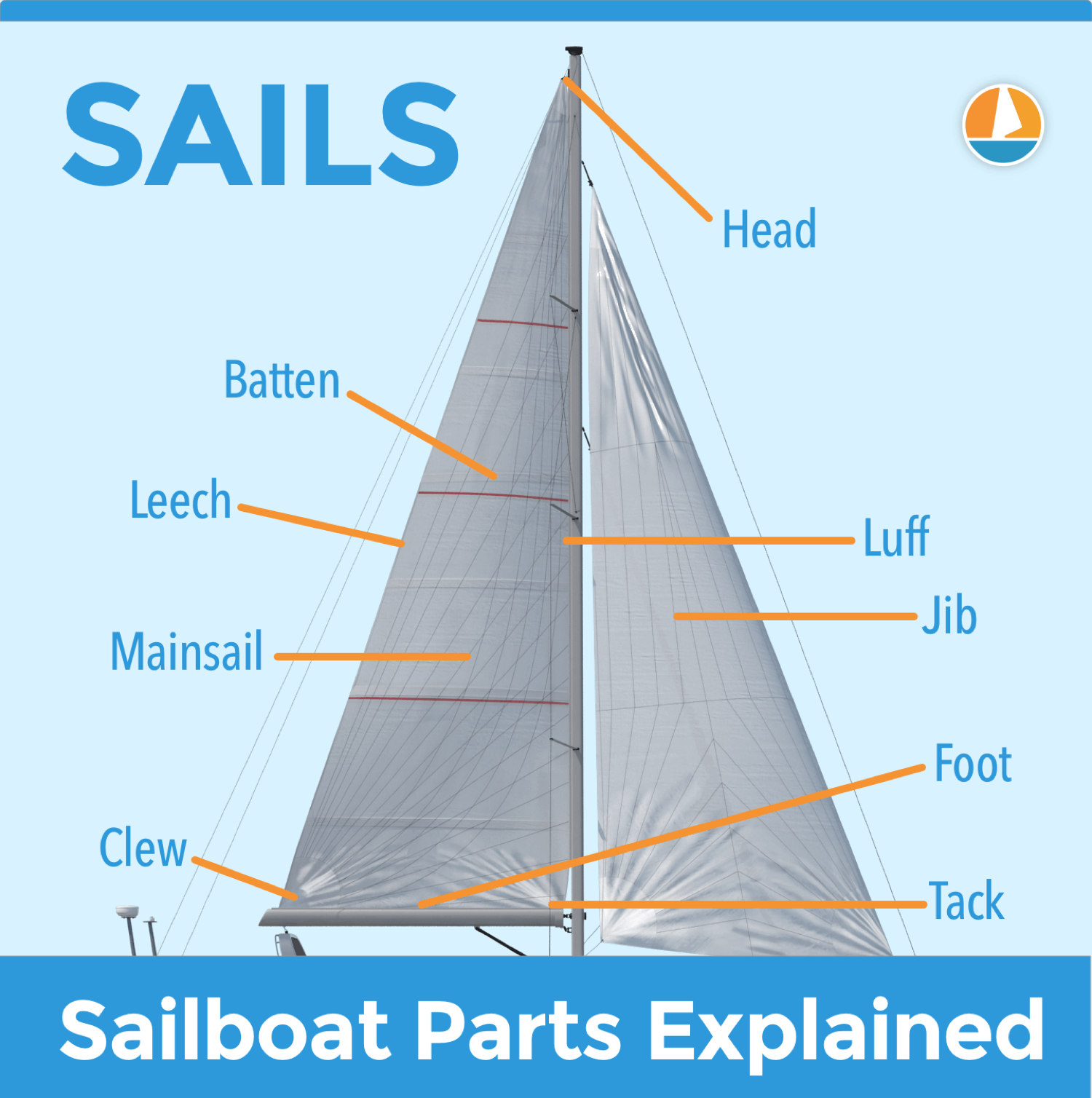
This diagram is again from our guide on sailboat parts, which I really recommend for beginners. If you're looking for a good starting point to learn your sailboat ins and outs, this article is perfect for you.
Leech
Leech of a sail is its back side edge. Thus it is the part closest to you when you are standing at the helm. Just as with the foot, this is a term quite often used when describing sail trimming techniques, since the shape of the leech determines the shape of the whole sail.
Luff
Luff of a sail is its front side edge. Thus the part the furthest from you when you are standing at the helm. For mainsail, it is the edge that is right next to the mast, for the foresail it is the edge right next to the forestay. Just as with foot and leech, the shape of these edges determines the overall shape of the sail so you will most likely encounter these terms in trimming lessons and tutorials.
Head
The head of a sail is its top corner. On a traditional sloop, you will have the 'main head' and the 'jib head'. There is usually a reinforcing patch of some kind on these corners, as you will find a hole in them to which a line is attached.
It's also something else entirely, but more on that later ...
Halyard
Halyard is the line attached to the sail head. On your boat, you will most likely have two. The 'main halyard' which is what you use to hoist your mainsail if it is folded on the boom, and the 'jib halyard' which holds the jib head up.
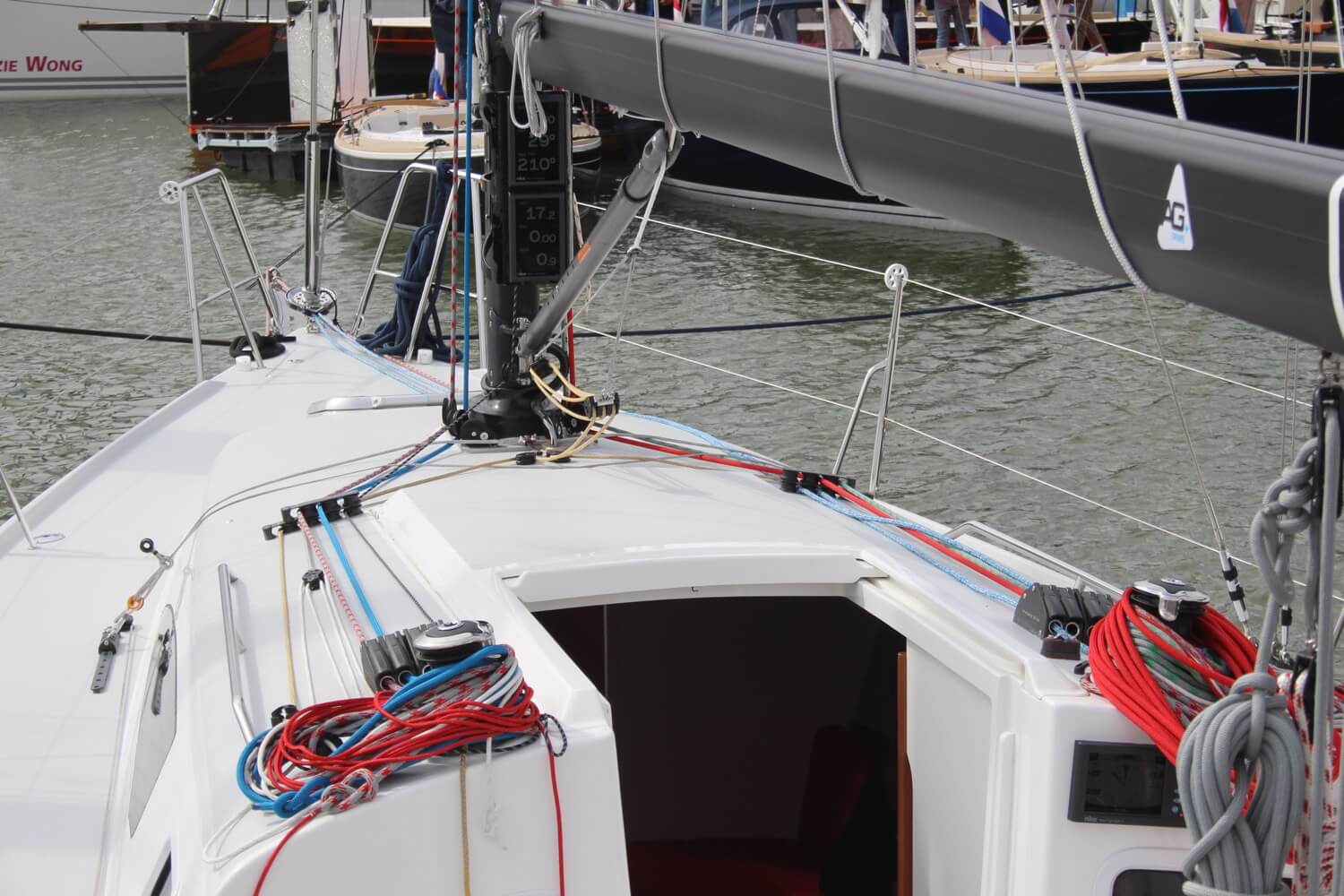
Clew
Clew of a sail is its back corner. The line attached to the 'main clew' will be used to hoist your mainsail if it is wrapped inside of the mast. The line attached to the 'jib clew' will be used to open the jib on most sailboats since jibs are most often wrapped around the luff.
Telltales
Telltales are light, usually cotton or wool pieces of ropes attached to a sail, showing you the airflow around it. These are important because they help you determine if your trim is effective or not. Because of the material they are made of, you might sometimes encounter them being called 'woolies'.
Vang
Vang, or a 'boom vang' is a device pulling the boom down. This is important because it controls the tension of the mainsail, influencing its shape greatly. You won't find it on every boat though. Holiday cruisers often don't have it, as it is a piece of equipment focused on performance and thus not necessary for your average trip.
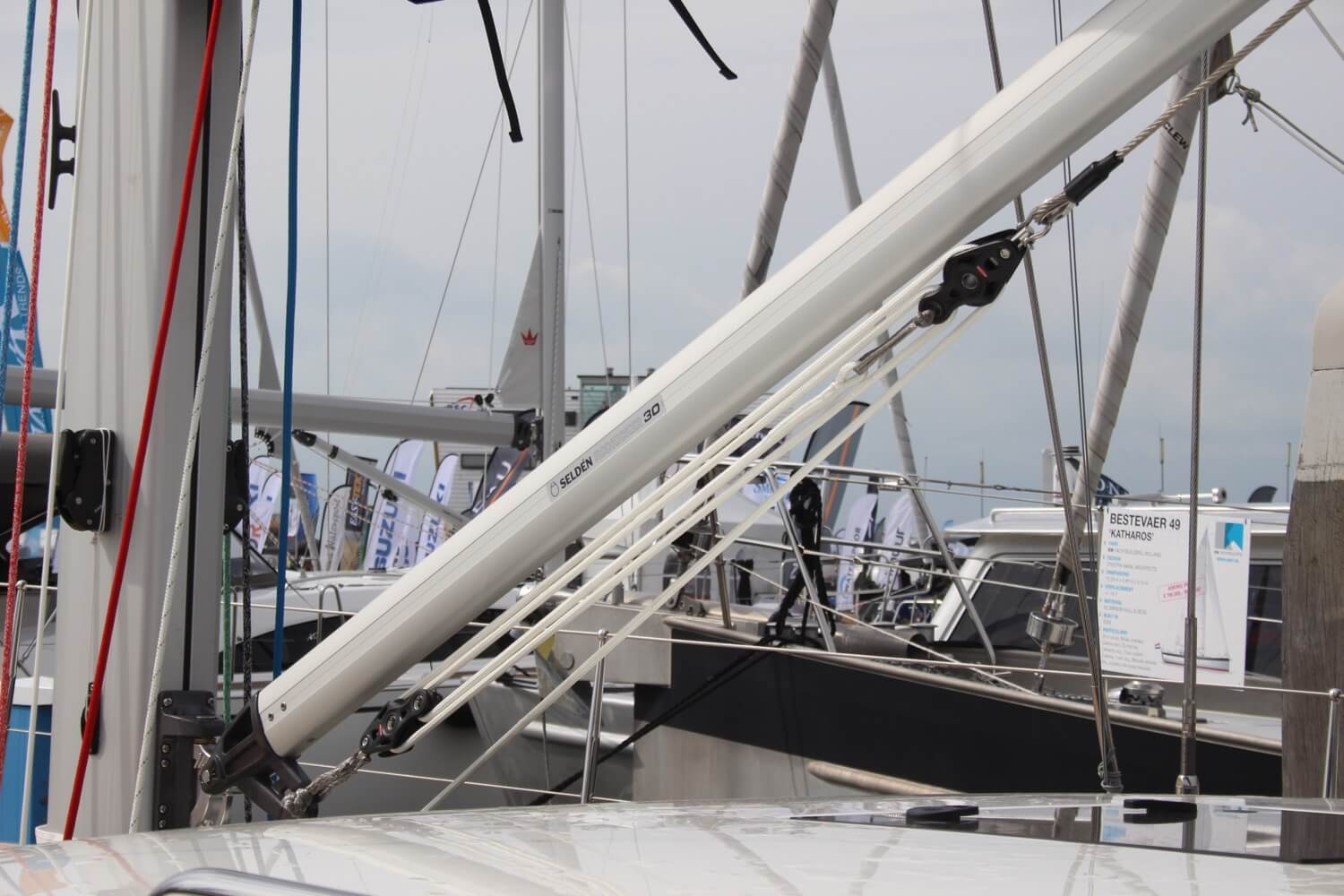
Topping Lift
The topping lift is a line that is attached to the aft (back) end of the boom and runs to the top of the mast. It supports the boom whenever you take down the mainsail.
Traveler
Also referred to as a 'horse', the traveler is a side to side track to which the boom is attached, allowing the control of the extent to which the boom goes off the centerline. This is important especially if the wind is blowing from behind and you need to control the angle of the mainsheet.

Outhaul
Outhaul is the line attached to the mainsail or the jib clew, allowing the control of the foot tension. This is important for determining the sail shape - for instance in stronger winds, you want the foot to be more tense to achieve a more effective airflow as opposed to slower winds where you can allow the foot to arch more.
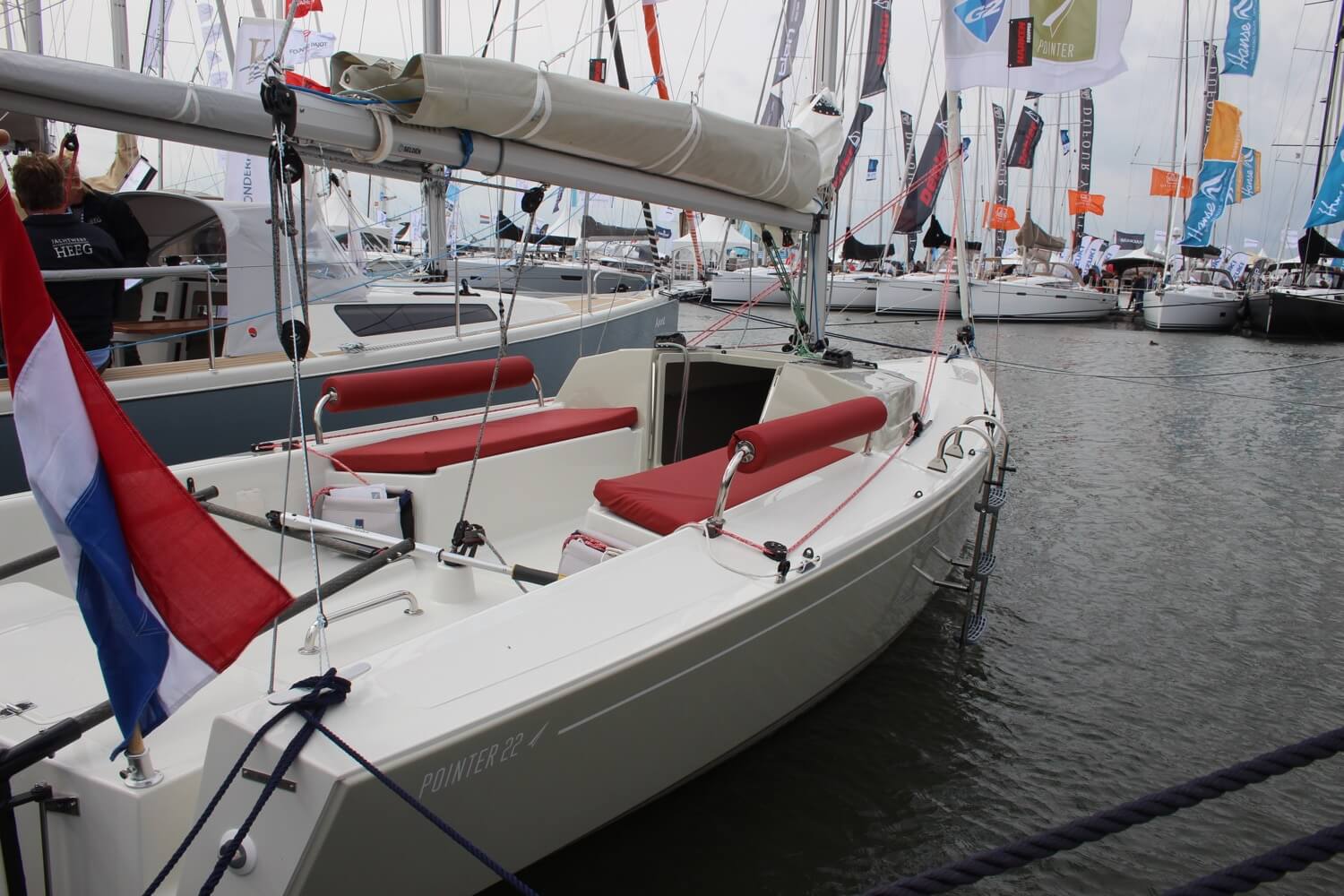
Reefing
Reefing is reducing the sail area to lessen the power exerted on it by the wind. You may want to reef if the wind is getting too strong for your boat, or if it is changing too rapidly, as an overpowered boat is difficult to control. Fun fact: they say that when you feel you need to reef because the wind got too strong, it is already too late to reef.
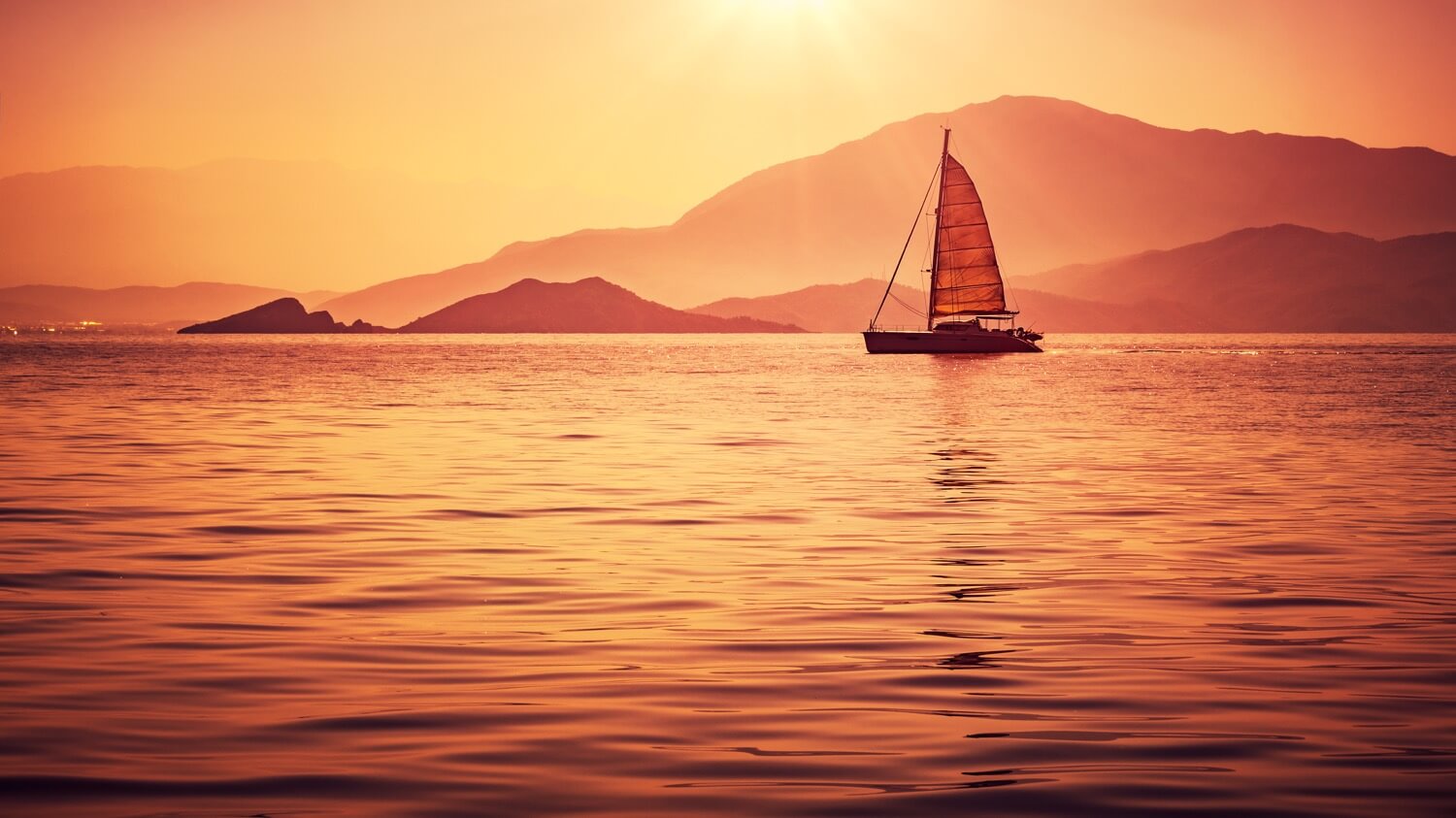
Batten
A batten is a slat placed horizontally in the body of the sail to support its shape. You will not find them on all sailboats, it is a performance-enhancing element that many cruisers lack. It helps tremendously as without it, sails tend to belly out and lose their shape under certain conditions.
Cleat
The cleat is a piece of fitting where a line can be secured and immobilized, even if under great tension. It usually consists of two cogwheel-like pieces fastened close to each other, in the middle of which the rope is placed, unable to move thanks to friction. This type is great as it allows for a quick release. Sometimes though, it is a simple piece of metal or plastic where the rope is tied.
Other terms
...and then there are all those things that just float around you when sailing, those little things that are the reason for you having to carry a dictionary in your pocket.
Fender
Fenders are bumpers allowing some contact with other boats or piers while docked, without scraping the paint. They are often balloon-shaped, made of rubber or some relatively soft material. They are usually attached to the boat's railing and you move them around as you need.

Beam
The beam is the width of the boat. Could be just called width, I know. The word comes from the fact that there are transverse reinforcing beams in the boat hull and deck. Next time you are choosing your charter boat for holidays, you will know what this attribute means.
True wind
True wind is the actual direction and speed of the wind. This is different than the apparent wind, which is wind direction and speed relative to the boat. Apparent wind is a combination of the true wind and the headwind, which is the wind the boat experiences solely by being in motion.
Berth
The berth is a sleeping space on a boat. Thus if a boat has eight berths, it means eight people can comfortably sleep on it. Note that this often includes the salon couches, so a berth is not necessarily a space in an actual bed for one person.
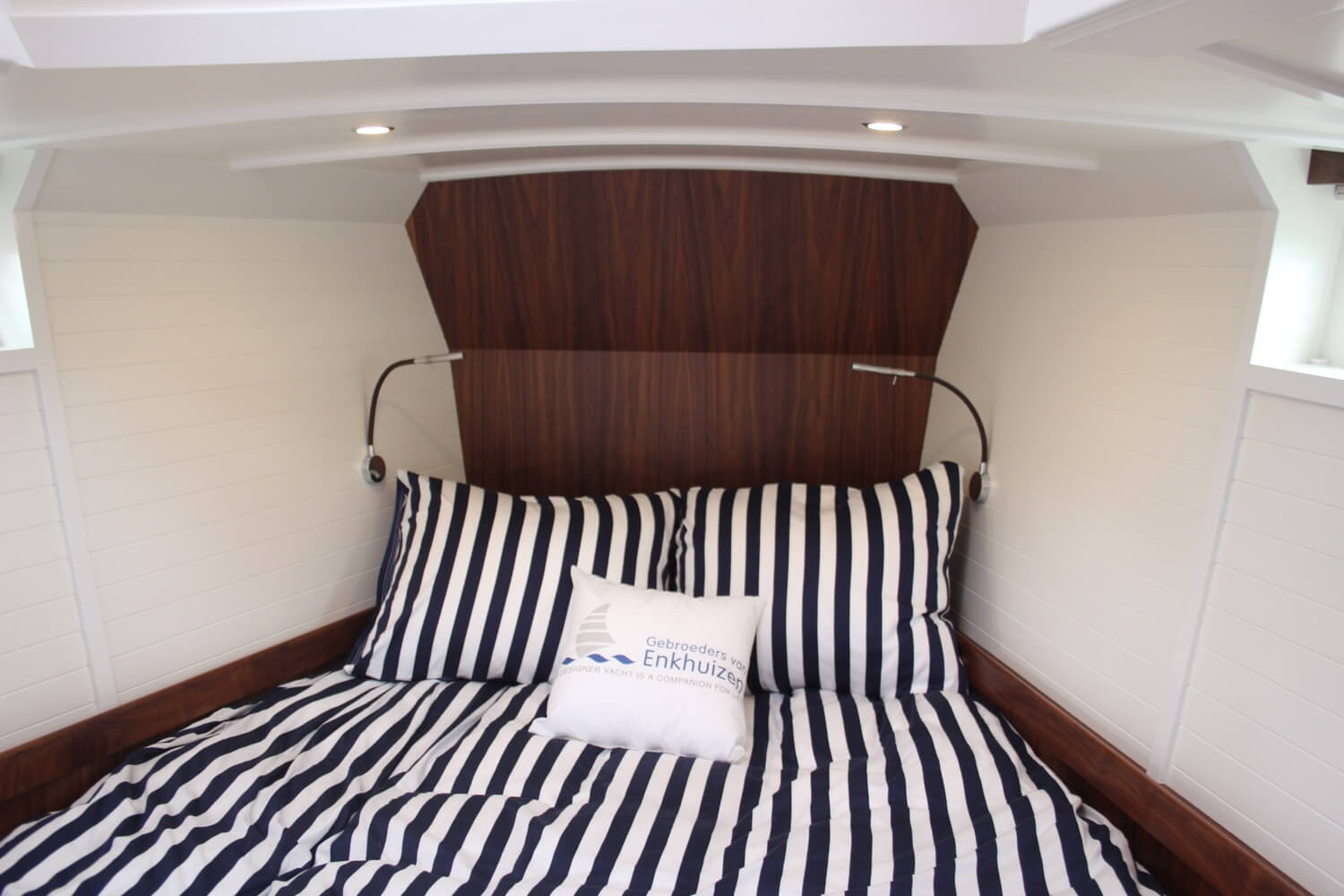
Draft
Boat's draft is the distance from the water surface to the deepest point of the boat. In other words, the draft is the minimum water depth you can go to and not scrape your hull or keel. Better double this number when sailing, just to be safe, as hitting the seabed can have disastrous consequences.
Tacking
Tacking is zig-zagging towards your destination. It is necessary in case your destination is in the direction of the wind since sailboats can not go directly into it. Since the closest to the wind direction you can sail is around 45 degrees, you have to change direction left and right from your desired course.
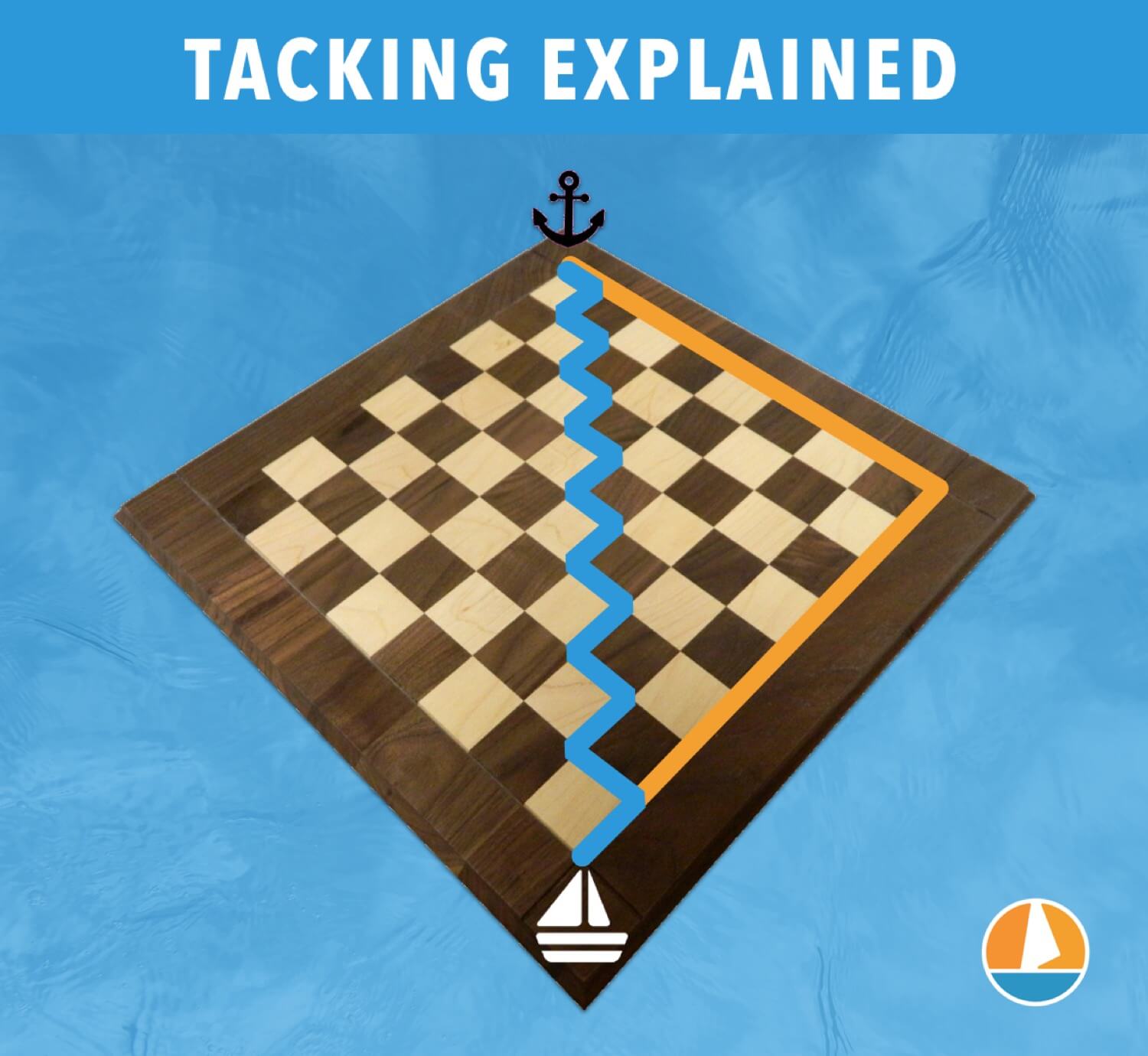
This diagram is from our guide on sailing into the wind for beginners, which explains in 7 simple steps how to get good upwind sailing performance.
Bareboat
Bareboat is a boat without a skipper. You will encounter this term in boat charters and it means you rent the boat without any crew, thus you need to operate it yourself. It is the best way to sail unless you enjoy living in close proximity to a sea wolf who you also have to feed.
Chart
The chart is a nautical map. It differs from classical maps as it depicts information relevant for a sailor - water depth, navigational hazards, seabed material, anchorages and so on. Formerly made of paper, these days made of ones and zeros. As is everything in this digital world.
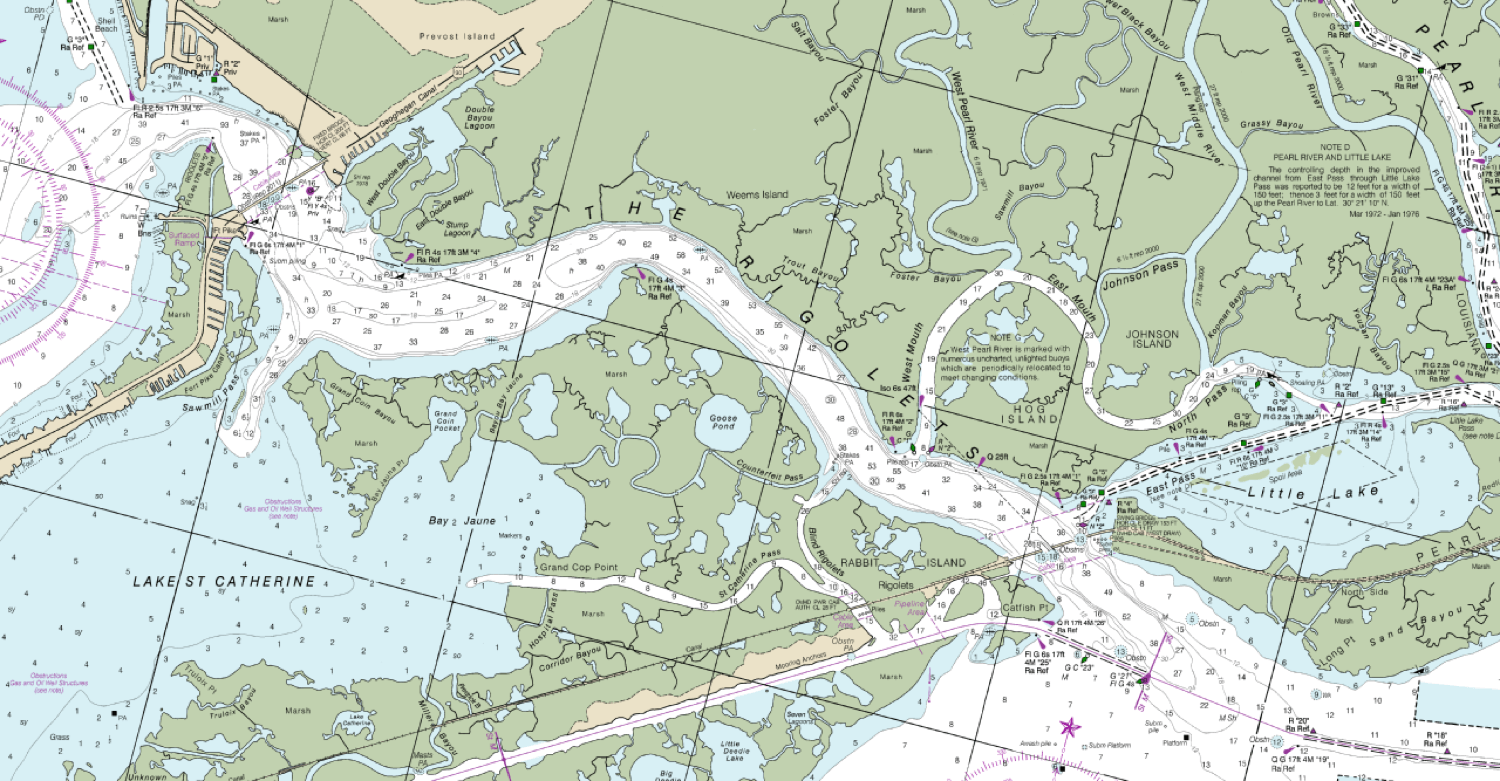
We have a guide that explains all the different chart types clearly for beginners - read it here.
Galley
Galley on a boat is its kitchen. Also a medieval warship, but if you find this term in a boat's description, war is not likely what they have in mind.

Heads
Heads on a boat is the bathroom. Though in all my years of sailing I have never ever heard anybody use this term instead of a 'bathroom'. I suppose saying that you are going to use the heads just sounds odd.

Knot
A knot is the unit of speed of boats. It is equal to one nautical mile per hour. That is 1.852 kilometers per hour or 1.5078 miles per hour. Though a bit confusing and annoying at times, you will have to get used to this, since most of your boat's instruments will use this unit. It dates all the way back to the seventeenth century when boat's speed was measured with a rope with knots tied on it.

Mooring
Mooring is attaching the boat to a buoy that is anchored to the seabed. This is usually a cheaper option to docking in a marina. It also means larger space between the boats anchored in the same area, thus more privacy. Though you will have to use your dinghy to get to shore instead of just stepping on the pier directly from your deck.

Salon
A salon on a boat is its living room. On smaller boats, it is usually in the same room as the boat's kitchen and the captain's corner with navigation instruments.

Skipper
A skipper is the captain of a sailboat. If you ask me, the word 'captain' is much better than a skipper, which to me sounds like a small boy who sits on the shore the whole day, skipping stones. But hey, who am I to talk.
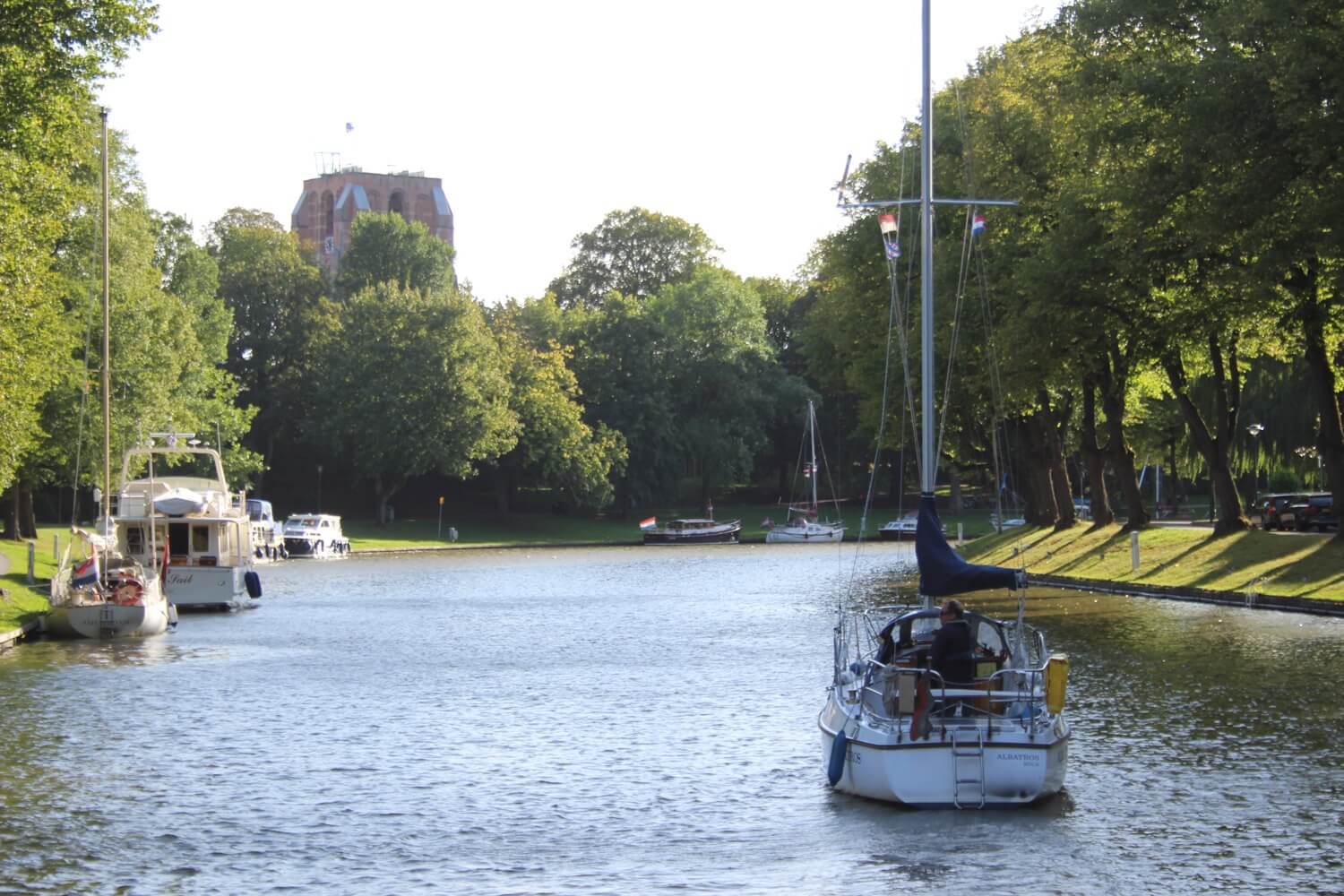
Monohull
A monohull is a classical boat with a single hull. A boat with two hulls is called a catamaran, or a 'cat'. Although rare, there are also trimarans, boats with three hulls. Multihulls with four or more hulls do happen but they are an unnecessary freak of nature.
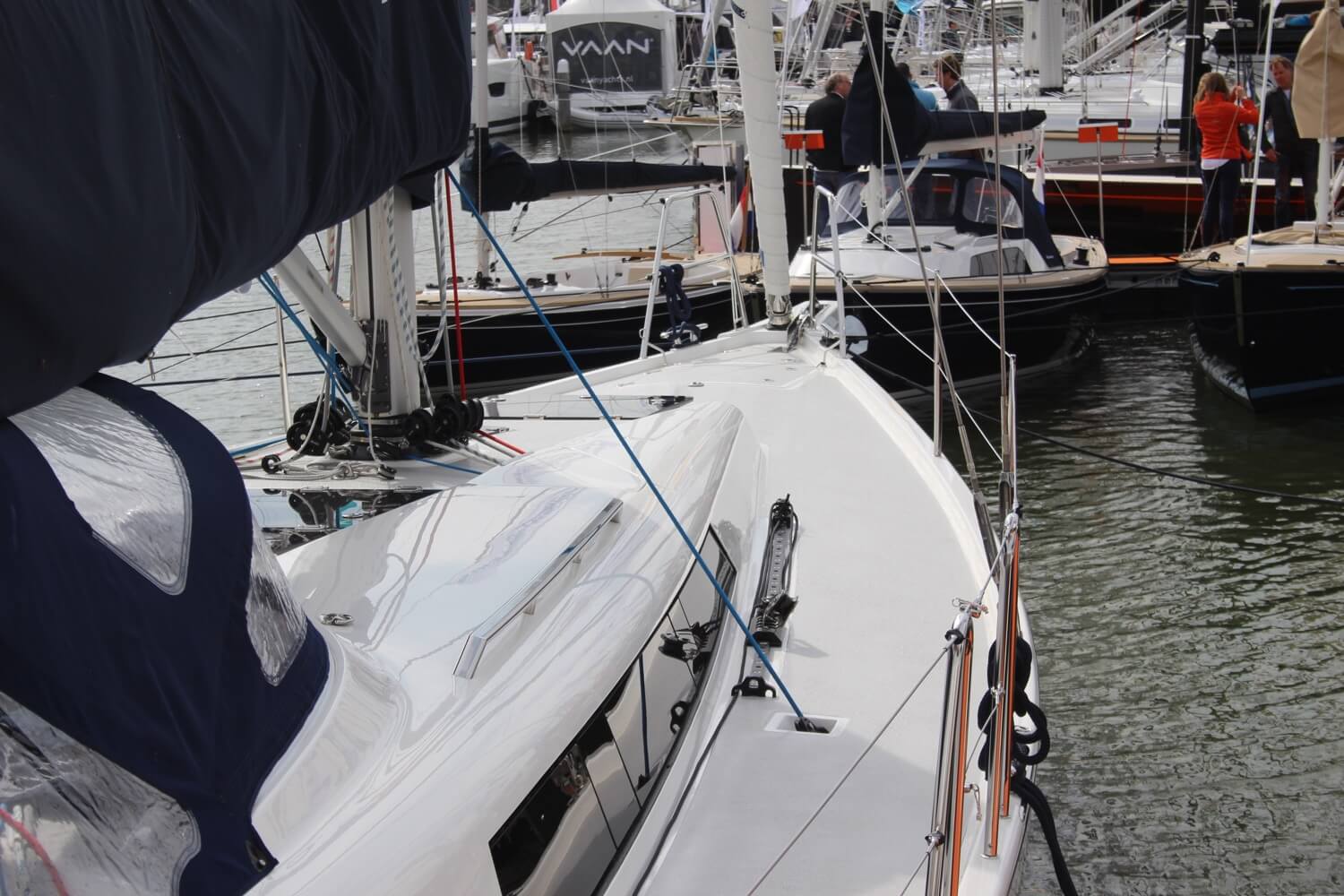
So there you have it. Fifty sailing terms you will encounter the most when traveling or learning. I know you might think some of them are a bit unnecessary since they have a perfectly fine 'real world' equivalent. I agree. But until the tradition changes, you might want to get some of these under your skin.
Freeboard
A boat's freeboard is the distance from the upper deck to the waterline. Classic yachts have low freeboards, so they appear to lay deeper in the water, as opposed to more modern yachts, which have a higher freeboard. It literally means 'free-board': the amount of visible board.
Lunch hook
The lunch hook is a light anchor setup that is used to moor small yachts temporarily. It typically uses a lightweight anchor on a short scope that takes little effort to set. The lunch hook is only used when the crew is on board and will be monitoring the anchor.
Did you find the answer to your specific question?
👍 41 👎 15


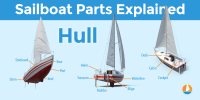

Comments
Rich
In naval architecture and ship design: “Head” = WC = Bathroom.
A toilet is still a toilet. The toilet is in the head. In olden day, the toilet was a hole in the head.
Shawn
Hi Rich, you’re absolutely right. I’ve corrected the error. Thanks for pointing it out.
Eugene
A nautical mile is one minute of a degree, so if you travel 60 nautical miles that means you have gone 1 degree around the “globe”. (Note: arc length not actual length.) This is the original definition. As such the average was agreed upon and the lengths given a standardization. Which you mentioned.
As such 1 knot is to travel one nautical mile in an hour.
Also 1.5078. I think you made a mistake as it should be 1.1508 miles to a nautical mile.
Thanks for the information.
Sorry about being a pedantic mathematics teacher.
Todd
So, where is the “nautical mile” calculated from, the equator or one of the tropic lines?
Kirk
Just to clarify a nautical mile. If you draw an imaginary line from the North Pole or South Pole to the center of the Earth and draw another line from the center of the Earth to any point on the equator, it forms a right angle, which is 90 degrees. This equates to latitude. The equator is 0 degrees and the poles are 90 degrees. Your latitude is the angle that you are north or south of the equator. Each degree of latitude is divided into 60 minutes. A minute of latitude is the same distance matter where you are on Earth. It is 6,076 feet. This is the length of a nautical mile. A statute mile is 5,280 feet, so a nautical mile is 1.1508 statute miles.
Susi
Thank you very clear and well explained. Hopefully I’ll remember The Fifty
KöhnSharkösz
Really? No gunwale? No transom?
Those or basic terms to the Washington State Boater Education Card required to operate watercraft here. Definitely more of a “need to know” than bimini.
Valerie
Thank you, those definitions and explanations were clear, thorough, and helpful. I’m really glad I found my way (somehow) to your webpage.
alex
YOUR WISH IS MY COMMAND SKIPPER
Bernd
Here is why I see the terms port / starport as very important substitutes to left and right:
No matter where you are facing on a boat, when receiving an instruction or indication, it is absolutely clear where the instruction guides you.
Lets say someone says: watch the buy on the right…
Well, when I am facing forward, it will be starboard but wen I am facing back, it will be port side, not to mention when I am placed facing the side of a boat, where the instruction may mislead me to look forward or backwards respectively.
So, as odd as many terms are, this one, is a no briner to me and EVERYONE should use the correct definition as here, accidents can happen by miss orientation - disorientation…
I’m relaxed on other terms but the for locations of a boat, I do not interchange with other words and I am a pretty lazy guy to learn technical expressions….
Enjoy life to the fullest
Bernd
Gene Germano
So, if I sail at 10 knots, I am sailing at 15 miles per hour, which is to say I am sailing at 8.6896 nautical miles per hour, which is to say I am sailing at 8.6896 minutes per hour.
It’s not confusing at all. Nope, not one bit.
Leave a comment